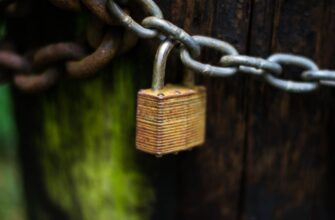- How to Guard Your Crypto Wallet Offline: A Beginner’s Security Guide
- Why Offline Storage is Non-Negotiable for Crypto Security
- Types of Offline Wallets: Choosing Your Cold Storage
- Step-by-Step: Setting Up Your First Offline Wallet
- Best Practices for Maintaining Offline Wallet Security
- Common Offline Wallet Mistakes Beginners Must Avoid
- FAQ: Guarding Your Crypto Wallet Offline
How to Guard Your Crypto Wallet Offline: A Beginner’s Security Guide
As cryptocurrency adoption grows, securing digital assets becomes critical—especially for newcomers. Offline storage, often called “cold storage,” is the gold standard for protecting crypto from hackers. This guide breaks down how beginners can effectively guard their crypto wallet offline with simple, actionable steps.
Why Offline Storage is Non-Negotiable for Crypto Security
Online (hot) wallets connect to the internet, making them vulnerable to hacking, phishing, and malware. Offline wallets store private keys completely disconnected from the web, creating an “air gap” that blocks remote attacks. For beginners, this approach:
- Eliminates hacking risks: No internet connection means hackers can’t access your keys remotely.
- Protects against malware: Keyloggers or spyware on your devices can’t compromise offline storage.
- Provides long-term safety: Ideal for “HODLing”—holding assets for years without frequent access.
Types of Offline Wallets: Choosing Your Cold Storage
Beginners have two primary offline wallet options:
- Hardware Wallets: Physical devices (like Ledger or Trezor) that generate and store keys offline. They connect to computers only for transactions.
- Paper Wallets: Physical printouts of your public and private keys. Generated offline for zero digital footprint.
For most beginners, hardware wallets offer the best balance of security and usability.
Step-by-Step: Setting Up Your First Offline Wallet
Follow this beginner-friendly process using a hardware wallet (example: Ledger Nano S):
- Purchase from official sources: Buy directly from manufacturer websites to avoid tampered devices.
- Initialize offline: Unbox in a private space, connect to a malware-free computer, but DO NOT connect to the internet yet.
- Generate recovery phrase: Write down the 12-24 word seed phrase on the provided card. Never digitize this—store it physically.
- Set PIN code: Create a strong PIN (6-8 digits) to lock the device.
- Transfer crypto: Connect briefly to send assets from your exchange to your new wallet address. Disconnect immediately after.
Best Practices for Maintaining Offline Wallet Security
- Guard your recovery phrase: Store it in a fireproof safe or bank vault. Never share or photograph it.
- Verify addresses manually: Double-check receive/send addresses on your hardware wallet screen—don’t trust computer displays.
- Update firmware cautiously: Only update via official apps, and disconnect when not in use.
- Use multi-signature (multisig): For large holdings, require 2-3 devices to approve transactions.
Common Offline Wallet Mistakes Beginners Must Avoid
- ⛔ Storing recovery phrases digitally (email/cloud).
- ⛔ Buying hardware wallets from third-party marketplaces (e.g., Amazon/eBay).
- ⛔ Using public computers for setup.
- ⛔ Ignoring firmware updates entirely.
FAQ: Guarding Your Crypto Wallet Offline
Q: Is an offline wallet 100% hack-proof?
A: While highly secure, physical theft or compromised recovery phrases can still risk assets. Always combine offline storage with physical security measures.
Q: Can I use a USB drive as an offline wallet?
A: Not recommended. USB drives are prone to corruption, loss, and malware if ever connected to infected devices.
Q: How often should I check my offline wallet?
A: Only when transacting. Frequent checks increase exposure risk. For long-term holds, review quarterly.
Q: What if I lose my hardware wallet?
A: Your crypto is safe if you have the recovery phrase. Buy a new device, enter your phrase, and regain access.
Q: Are paper wallets still reliable?
A: Yes, but they’re fragile and easy to misplace. Laminating and storing multiple copies in secure locations is essential.
Final Tip: Start small. Transfer a test amount to your offline wallet before moving larger sums. As you master these steps, you’ll build confidence in guarding your crypto securely—offline.








